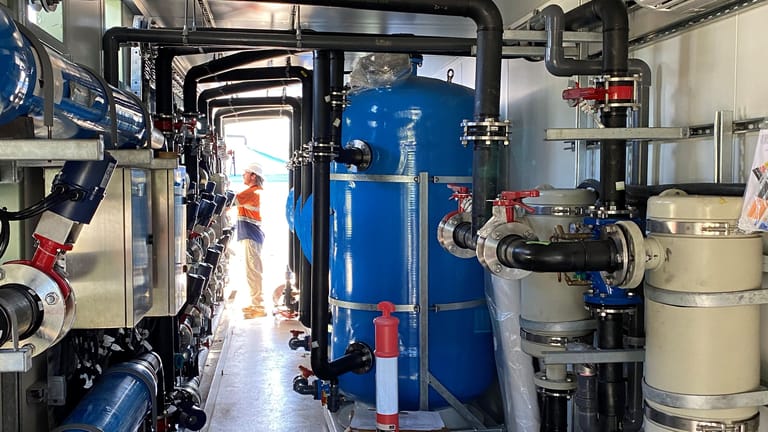
Image Source – Google
Ion exchange is a popular method used in water treatment to remove unwanted contaminants from water. This process involves the exchange of ions between a solid, such as a resin, and a liquid, typically water. The science behind ion exchange water treatment lies in the ability of certain materials to attract and trap ions of contaminants, allowing for the removal of impurities from the water.
So how does ion exchange water treatment work? The process begins with a resin bed that is made up of small beads or granules. These resin beads are typically made of synthetic polymers that have been specifically designed to attract and capture ions. The resin beads are charged with either positively or negatively charged ions, depending on the type of contaminants that need to be removed from the water. If you are looking for ion exchange water treatment then you may hop over to this website https://zibosuyuantech.com/industries/water-treatment/.
As water passes through the resin bed, the unwanted ions in the water are attracted to the resin beads, causing them to detach from the water and adhere to the resin. At the same time, the resin releases ions of the same charge into the water, effectively exchanging the unwanted ions for harmless ones. This exchange process continues until the resin is saturated with contaminants, at which point it must be regenerated or replaced.
There are two main types of ion exchange water treatment: cation exchange and anion exchange. Cation exchange is used to remove positively charged ions, such as calcium, magnesium, and sodium, from the water. In this process, the resin beads are charged with hydrogen or sodium ions, which exchange with the unwanted ions in the water. Anion exchange, on the other hand, is used to remove negatively charged ions, such as nitrate, sulfate, and fluoride. In this process, the resin beads are charged with hydroxide ions, which exchange with the unwanted anions in the water.
One of the key benefits of ion exchange water treatment is its ability to selectively remove specific contaminants from water. Because the resin beads can be engineered to attract specific ions, this method is highly effective at targeting specific pollutants. This makes ion exchange particularly useful for treating water that contains high levels of certain contaminants, such as heavy metals or nitrates.
Another advantage of ion exchange water treatment is its efficiency. The process can remove a wide range of contaminants in a single step, making it a cost-effective and time-saving method of water treatment. Additionally, ion exchange systems can be easily scaled to meet the needs of different applications, from residential water softening to industrial wastewater treatment.
Despite its many benefits, ion exchange water treatment does have some limitations. For instance, the process is not always effective at removing organic compounds or dissolved solids from water. Additionally, ion exchange systems require regular maintenance and regeneration to ensure optimal performance. This can add to the overall cost of using this method for water treatment.
In conclusion, the science behind ion exchange water treatment is based on the principle of exchanging ions between a resin bed and water to remove unwanted contaminants. By selectively attracting and trapping specific ions, ion exchange systems can effectively remove a wide range of pollutants from water. While this method has its limitations, it remains a popular choice for water treatment due to its efficiency and selective removal capabilities. With ongoing advancements in materials science and technology, ion exchange water treatment is likely to continue playing a key role in ensuring clean and safe water for various applications.

 a business analyst and part time blogger. I am crazy about gathering latest information around the world. I have started this blog to share my knowledge & experience.
a business analyst and part time blogger. I am crazy about gathering latest information around the world. I have started this blog to share my knowledge & experience.